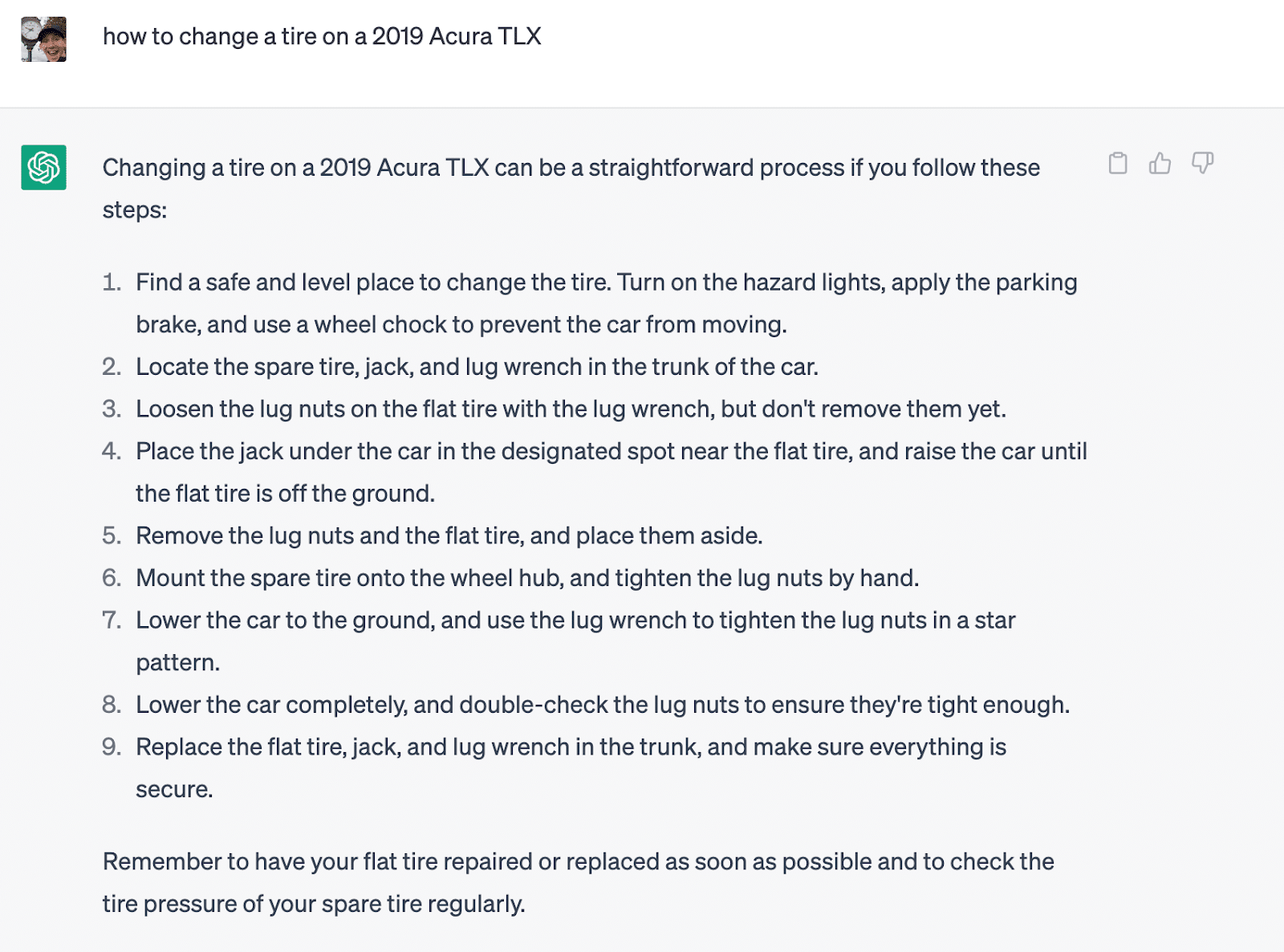ALL BUSINESS
COMIDA
DIRECTORIES
ENTERTAINMENT
FINER THINGS
FREE CREATOR TOOLS
HEALTH
MARKETPLACE
MEMBER's ONLY
MONEY MATTER$
MOTIVATIONAL
NEWS & WEATHER
TECHNOLOGIA
TV NETWORKS
VIDEOS
VOTE USA 2026/2028
INVESTOR RELATIONS
ALL BUSINESS
COMIDA
DIRECTORIES
ENTERTAINMENT
FINER THINGS
FREE CREATOR TOOLS
HEALTH
MARKETPLACE
MEMBER's ONLY
MONEY MATTER$
MOTIVATIONAL
NEWS & WEATHER
TECHNOLOGIA
TV NETWORKS
VIDEOS
VOTE USA 2026/2028
INVESTOR RELATIONS
Posted by - Latinos MediaSyndication -
on - April 27, 2023 -
Filed in - Marketing -
-
410 Views - 0 Comments - 0 Likes - 0 Reviews

Marketing conversations nowadays almost always involve artificial intelligence, particularly when it comes to the future of search.
Will AI chatbots powered by large language models (LLMs) such as ChatGPT and Bard ultimately replace “traditional” search as we know it?
Generative AI brings a meaningful shift with vast possibilities for the future of search. The potential for disruption makes it an exciting time for the industry.
Curious about the strengths and weaknesses of traditional search engines versus AI chatbots, I ran 100 identical queries in both Google search and ChatGPT. The results revealed that each approach has its own advantages in certain situations.
This article covers key areas where traditional search engines and AI chatbots like ChatGPT have the upper hand.
Advantages of traditional searchWhere do search engines have the edge? Four areas will be hard to shake from consumers’ minds.
Facts and figures (birthdays, ages and math problems)When you search on Google, it does not only suggest and anticipate the full query.
In most cases, it also provides the answer without hitting enter.
This applies to queries where the answer is specifically a number result.

If you want anything visual, traditional search is the way to go.
While ChatGPT may eventually catch up in this area, Google’s vast ecosystem is currently a major advantage.
With access to Maps, YouTube, and Gmail, Google has a wealth of knowledge about its users.
For example, you can simply tell Maps to navigate from “home” to a specific location like Progressive Field.

YouTube is another powerful tool, particularly for “how to” searches. Google can quickly pull up relevant YouTube videos and take users directly to the section of the video that answers their query.
ImagesSimilar to the integrations point above, Google’s ability to identify the contents of an image and provide users with relevant results is a valuable use case for search.
As AI chatbots evolve, they will have the ability to integrate with multiple components and absorb even more images to understand them.
Google Lens is already using AI to decode images, and the next step is to apply this to AI chatbots.
But for now, image searches for products, plants, animals and more remain a key differentiator, adding value to users.

Having the ability to choose the source to get your answer or opinion is important.
For example, you might be seeking a restaurant recommendation and want to see if multiple sources agree on the same spot. Or perhaps you want to compare Fox News and CNN’s takes on a particular story.
With an AI chatbot, you’ll only receive one viewpoint without the ability to access a range of opinions.
Whether it’s a debate about the best Wu-Tang Clan rapper or a contentious political issue, gathering information from various sources can help you develop a well-rounded opinion.

Here are four areas where AI chatbots like ChatGPT shine.
Content creationChatGPT has the ability to generate copy at lightning speed, whether it's a poem, blog post, email, or even a script.
This has significantly reduced content creation time, putting pressure on marketers to evolve their writing and creativity.
Imagine the possibilities for your brand. You could quickly generate engaging blog posts or craft personalized emails for your customers.
 While this is a nice poem, I did not use it for my anniversary. My wife still appreciated the personal poem I wrote (at least, that’s what she told me).
While this is a nice poem, I did not use it for my anniversary. My wife still appreciated the personal poem I wrote (at least, that’s what she told me).
Similar to content creation, AI is transforming the creative process. You can now easily create everything from images and jokes to screenplays and songs.
While this technology is still being refined, it is set to change how we approach creativity – from ideation to execution.

Have you ever found yourself wading through endless ads and scrolling through cluttered websites when you only need a simple answer?
This may be more of a problem for the ad ecosystem overall, but AI chatbots do better when you just need straightforward answers to your queries.
Case in point: recipe websites.
They often provide a poor user experience, with too much fluff, numerous ads and the need for endless scrolling – even if you only really wanted a simple recipe for chocolate chip cookies.
On the other hand, ChatGPT simply gives you an answer. It takes you step by step and keeps the answer straightforward in a bulleted list.

“Everyone can be a 10x engineer.”
I’ve heard this statement many times since ChatGPT rolled out.
AI chatbots help support various tasks, such as summarizing meeting minutes, finding errors in code or helping solve math problems.
These tools enable users to expedite tasks that were previously tedious or time-consuming.
Search helped us find answers, but AI chatbots can become personal support agents.
They go beyond seeking answers and surface the answer with the solution already completed for us.

We are witnessing the early days of a significant change in the industry. It's a thrilling time for digital marketers since the rise of social media during the Web 2.0 era.
However, this change is much more consequential because AI has quickly disrupted the way we work. This will put pressure on existing business models, ultimately benefiting consumers.
Despite this, some critical use cases are still not yet accessible in AI chatbots. Thus, we'll still need to rely on traditional search engines for now.
Strap in, keep testing and enjoy the ride.
The post Where traditional search and AI chatbots excel: A closer look appeared first on Search Engine Land.

